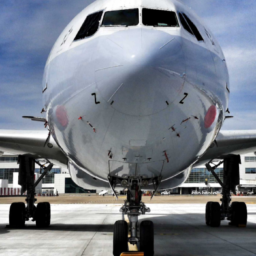
Should we abolish DST?
I remember this flight to London for a one-night layover on the weekend that clocks were turned back from summertime to wintertime. The next morning, one crew member got up 1 hour too early and two others showed up 1 hour late. This happened 25 years ago and since then, I’ve asked myself if we should abolish DST.
You may think “How can something this simple confuse half of the crew?” The problem was that local time in London is 1 hour behind on the time zone for our home base, Brussels, and clocks were turned back 1 hour in our home country only, and not in the UK. The UK would switch from summertime to wintertime the following month. I’ll leave you to figure out what time is displayed on your watch for a local pickup time at 6 a.m. with a clock change overnight. As a reminder for those born after the first landing on the moon, there were no cell phones that automatically show local time and do DST switching for you.
One year later, in 1996, the UK decided to align dates for clock change with central Europe. But up till today, the semi-annual dates for changing clocks back-and-forth differ per continent and result in considerable confusion. Europe switched to wintertime last week (October 25th) whereas Canada and the US did so last night (November 1st). That shift remains very confusing for anyone travelling and for international companies with offices across different continents. On top of that, the date for the time change in some countries is regulated by religious festivities or is sometimes adopted last minute by political decisions.
When did we introduce DST?
For ages, humans organized their life and daily routines by the sunlight, in synchrony with their biological body clock. Today, we have electric light and we live our lives by the switch of a button. For the younger ones, that switch is no longer the one on the wall directing the ceiling light, but the power button on their phone.
Daylight Saving Time (DST), also Daylight Savings Time or Daylight Time in Canada and the US, and Summertime in Europe and other continents, was introduced relatively not long ago, about a century ago. The idea of daylight saving time was first proposed in 1895 by the 18-year old British New Zealand entomologist and astronomer, George Vernon Hudson. That was only 15 years after Thomas Edison invented the light bulb in 1879, an invention that changed our lives! A small city called Port Arthur in Northern Ontario was the first place in the world to enact DST in 1908, soon followed by a few other cities in Canada. A decade later, in 1916, Germany, Austria and Hungary adopted DST as a way to conserve coal during wartime.
Why do we observe DST?
Proponents of daylight saving time argue that most people prefer an increase in daylight to our afternoon schedule, typically after the workday. DST is boosting the local economy as longer evenings give people more time to exercise in outdoor sports, go shopping and visit bars and restaurants. They claim that DST decreases energy consumption by reducing the need for lighting; it promotes outdoor leisure activity and is therefore good for physical and psychological health. Late evening daylight would also aid in road traffic safety and reduce the number of robberies.
The actual effect on energy savings is however heavily disputed. It may have saved some electricity a century ago when there was only the light bulb, but the advantage of one hour of extra daylight vanishes completely with today’s massive energy consumption by our computer screens, air conditioning units and all kinds of transport. Most studies indicate worldwide electricity-saving under 1%, with larger savings for countries farther away from the equator. Some studies show an increase in energy use when taking into account the impact of time change on the consumption of other energy sources, such as fuel and gas, that are used for heating.
Opponents argue that DST negatively impacts human health by disrupting our circadian rhythms. For most people, the tiredness at the start of DST is just an inconvenience, reflecting in a temporary dip in productivity. But taking away one hour of sleep can have more serious consequences on the health of others. Statistics show an increased risk for atrial fibrillation and heart attack at the beginning of summertime. Statistics also show an increase in traffic collisions during dark mornings, especially the first week following a spring forward. The early evening darkness after the end of summertime is often linked to depression and suicides. Changing clocks does also seems to disrupt animals.
How does DST impact aviation?
Being an aviator, you know everything about crossing time zones and jetlag. However, do you know that time zones by itself pose a problem for people on the ground that never boarded an airplane?
Humans and animals have a biological body clock that follows a natural day of 24 hours. Our daily rhythm, as when we eat and sleep, and when our brain works at its best, actually depends on the position of the sun. Our work and social clock try to overrule this body clock. In smaller countries, like The Netherlands, South-Korea or Chile, there is no big difference in the position of the sun when you live on the east side of the country or the west side. However, in wide countries like Russia, Canada and especially China, sunrise and sunset may differ by more than one hour for people living on the east side of a time zone and people living on the west side of that same time zone. When all people within that time zone wake up for work at 7 a.m., this could be daytime for people living in the east, while still night or dawn for people living in the west.
For professional pilots and flight attendants, crossing time zones is part of their daily life. Jetlag does harm to your sleep pattern and your health, especially for those performing intercontinental east-west crossings every week. From my own experience, I can tell you that our body never gets used to jetlag. You only learn to better understand how your body reacts to jetlag, you learn to anticipate fatigue during and after the flight. You learn how to personally best deal with this kind of fatigue, either by taking a powernap or by extending your day, sometimes up to 30 hours.
But none of this, including tons of black coffee, ever take away the tiredness caused by jetlag. It takes a few days to adjust your circadian clock to a new cycle of darkness and light. By that time, you’ve already flown back home, and your body must repeat the same process, oppositely. Changing clock time back-and-forth every 6 months for DST only makes things worse. Because in this scenario, it is not the cycle of darkness and light that changes but the time itself is changed. In our recent poll among 75K crew members using CrewLounge AERO, more than 70% of the participants indicated their preference to abolish DST. This group includes crew members that are based in countries where DST is not observed.
The changeover also affects airline timetables. For flights to and from a country that does not observe DST, this may even lead to airspace congestion and result in flight delays. Changing timetables may also impact international flights to airports that have a night curfew in place.
What countries observe DST today?
Changing clock time makes less sense for countries near the equator, as the amount of daylight does not vary enough during the year to justify DST. The same is true near the poles, where the difference between winter and summer daylight hours is very large. Most countries in Asia and Africa do not observe DST. In Australia and the US, some states do while some don’t. In total, around 20% of the world population switches clocks twice annually.
 Source: Wikimedia Commons
Source: Wikimedia Commons
The future of DST?
Today, DST is observed in 70 countries in the world, and this number is dropping. Some countries, such as Argentina, Malaysia, Singapore and Turkey, have moved to permanent daylight saving time. Russia went to permanent summertime in 2011 but changed that decision to standard time in 2015 because of the late sunrises in the winter.
As a side note, you can now imagine the complexity to retroactively calculate local times for a flight from Toronto to Moscow, say in 2015 during the weekend of clock change in Canada, and the decision of Russia to change local time. Our CrewLounge AERO apps take care of this for you!
US states California, Florida, Oregon and Washington plan to enact permanent DST but require the approval of Congress for it to take effect. About 50% of the US states consider making DST permanent but run against federal law by which states can only “opt-out” of DST. For DST to become permanent, the law must first be changed. None of the Presidential candidates appear to have that on their election roadmap.
Europe voted in 2018 to put an end to seasonal clock changes, but individual countries still have to decide on when and how this will be put into practice. The initial timing was set to 2019, but among other sectors, the airline industry pointed out the complexity around streamlining timetables and ensuring slot availability for EU domestic and intercontinental flights. Furthermore, some countries in Europe are in favor of staying on standard time, while others prefer to permanently fix the clock on summertime. Creating different time zones within Europe, where there are almost no differences today, can potentially disrupt the EU internal market.
Moving to permanent summertime leads to longer daylight in the evening, but it also forces people to begin the day in darkness. Perhaps the solution is to cut the cake in half and permanently switch to standard time + 30 minutes. This could end the discussions around health and the economy. It would keep most countries in Europe aligned with each other, and put Europe in sequence with India, which is permanently on UTC + 5:30.
It looks like DST is short-lived and about to disappear. However, despite the many inconveniences associated with DST, there are even more hurdles to be cleared in order to abolish DST.
Pictures by Nito, Bert Jennes, Jürgen Becker
Share this article with your friends and colleagues:


 Source: National Geographic
Source: National Geographic

















